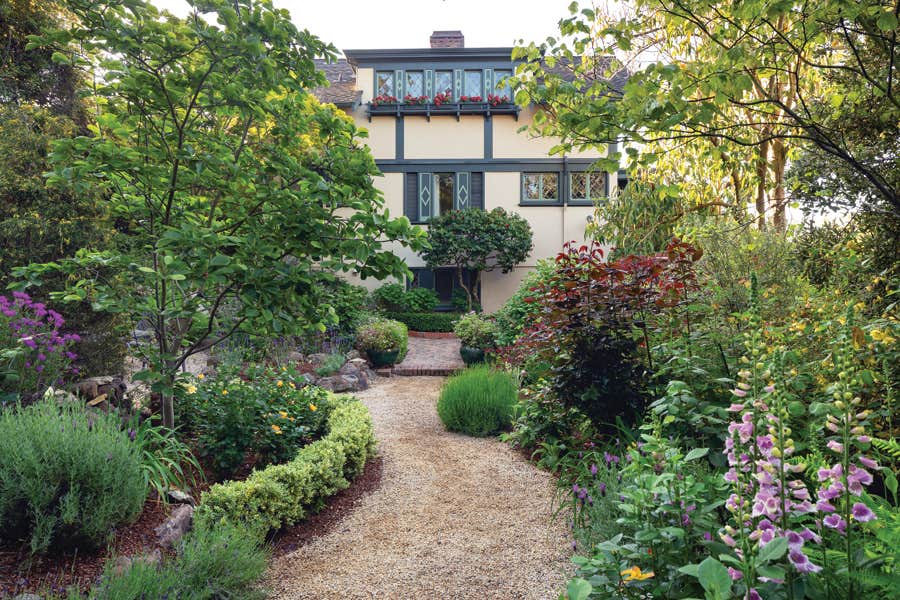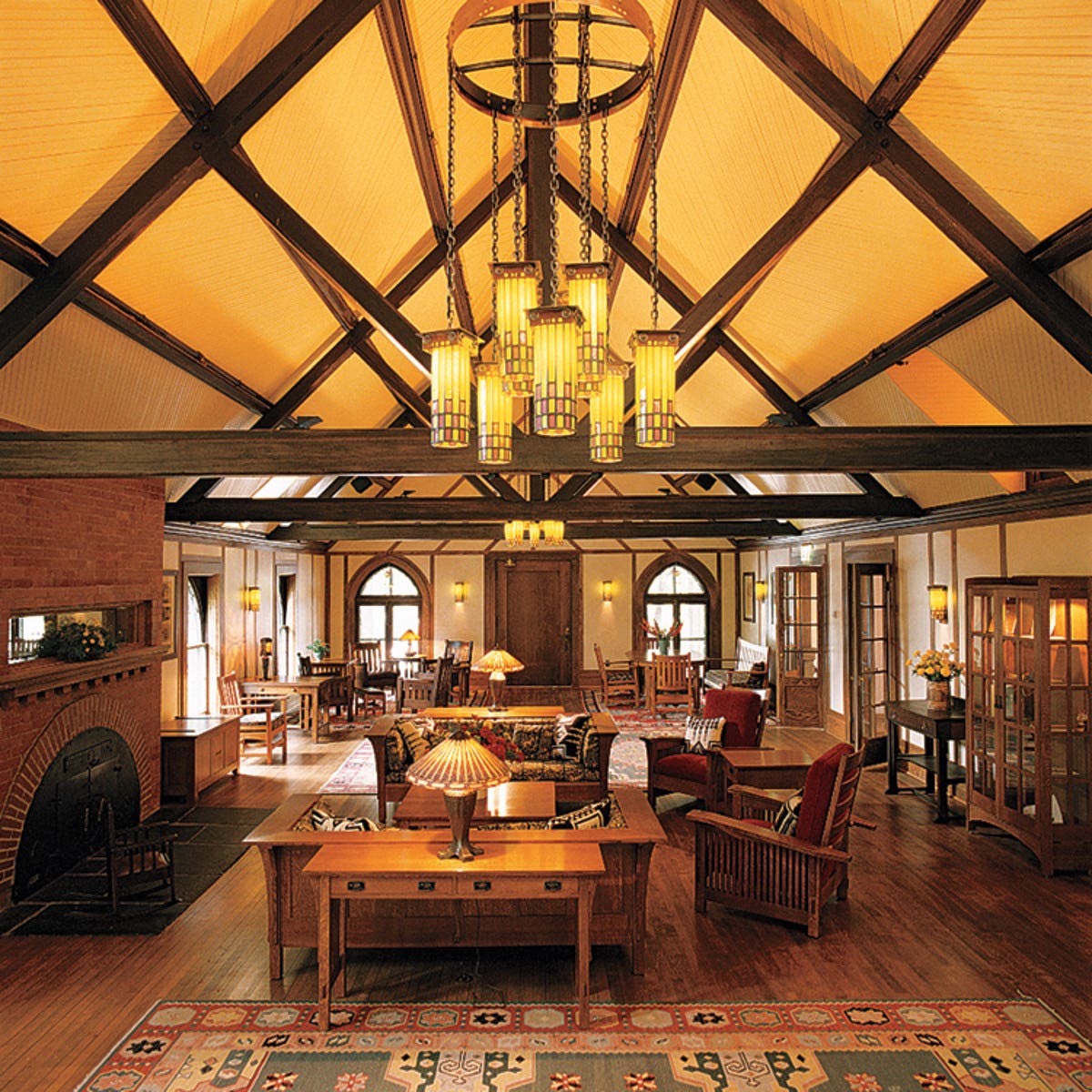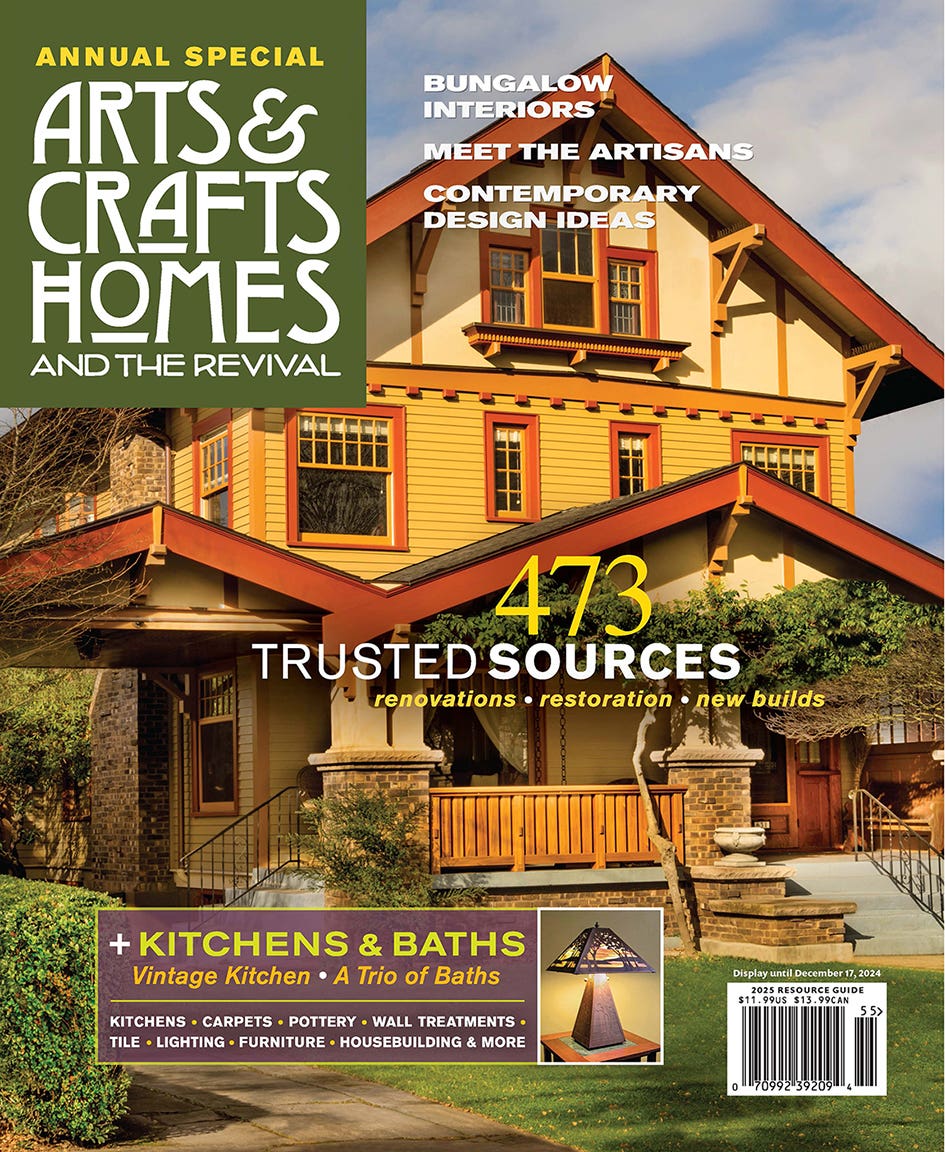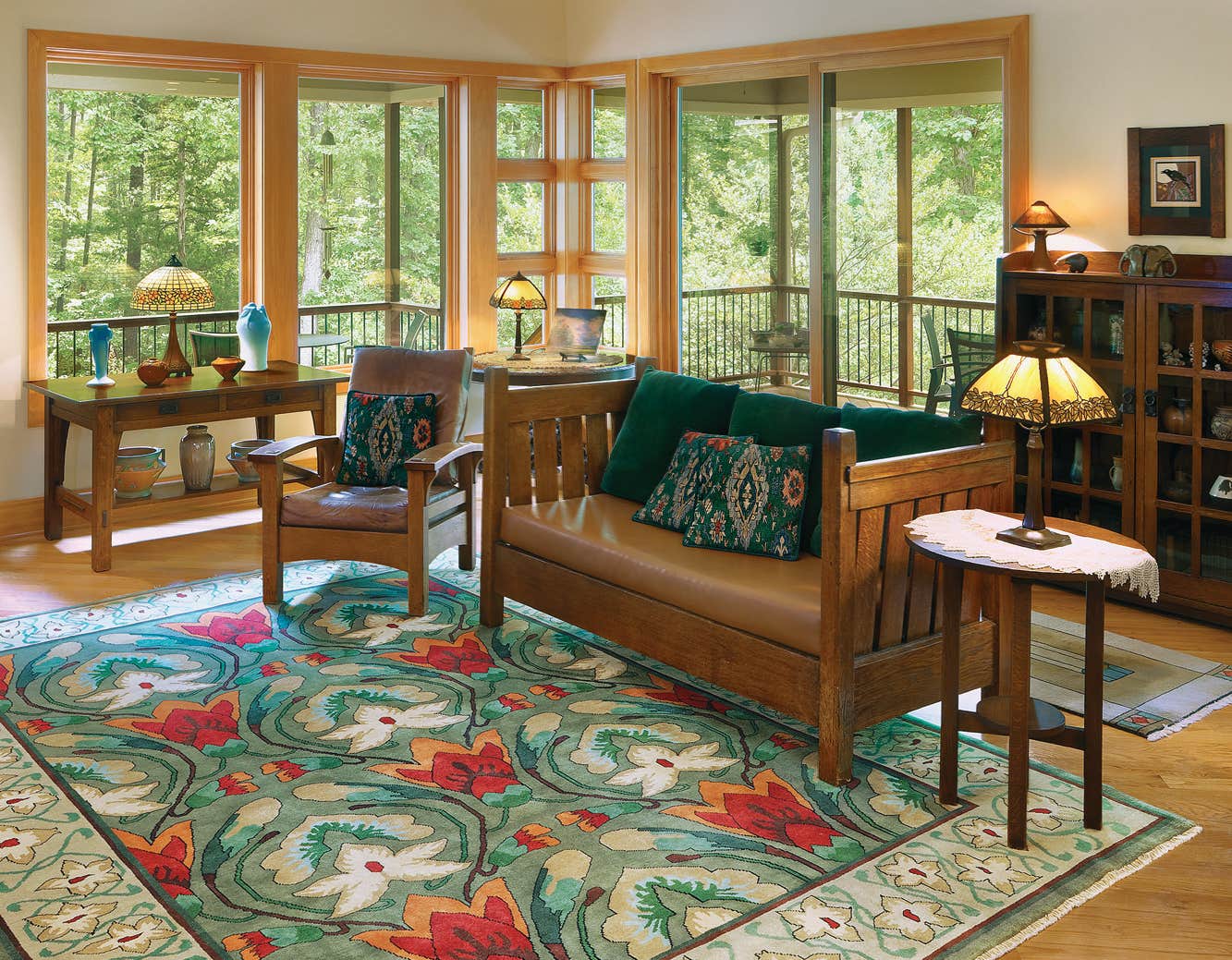20th-Century Storybook Homes
A Hollywood take on Medieval and European domestic architecture.
Fairytale, Hansel & Gretel, Storybook: These are names commonly given to a whimsical style that enjoyed only a brief moment but never ceases to bring a smile. It appeared in the Los Angeles area in the early 1920s, reached its height of popularity just before the Depression, and then it was gone, save for a few isolated examples. The style is theatrical and often humorous. The houses are unusually well crafted, of brick and stucco, shingles and even thatch—all artistically rendered to suggest great age.
Storybook Hallmarks
• FANTASY What distinguishes a Storybook from a Revival house is exaggeration. Look for a turretr and rubble stone or clinker brick and a catslide roof, plus such nonfunctional whimsy as fake dovecotes and castle-like crenellations.
• EUROPEAN DETAILS Look for Spanish ironwork, French Norman towers, Tudor half-timbering, round-arch doors, rolled-eave “thatched” roofs and jerkin-head gables, medieval stained glass, and casement windows.
• FALSE AGING The roof ridge may be swaybacked, the rough-troweled stucco “peeling” to reveal rubble stone, the shingles laid in irregular waves. Sometimes walls purposely were built out-of-square and out-of-plumb.
• MANIPULATION Many of these houses have wings and gables and add-ons that both suggest they grew over the ages and that hide their true size. Steep roofs, oversize and undersize elements manipulate scale.
Did you know that the famous sign, when constructed, read HOLLYWOODLAND? That’s right—it was the promotional sign for a subdivision begun in 1923. The developers required that homes be built in “French Normandy, Tudor English, Mediterranean and Spanish styles,” a nod to the growing popularity of Historical Revival styles. The architecture police weren’t patrolling however, and some of the homes constructed were, well, eccentric. A crack publicity staff succeeded in attracting the likes of Bela Lugosi, Humphrey Bogart, Gloria Swanson, and cellist Efrem Zimbalist Sr. Some early, and well publicized, revival houses were built in Hollywoodland, which crossed a line into what can only be called Storybook Style.
Patricia Poore is Editor-in-chief of Old House Journal and Arts & Crafts Homes, as well as editorial director at Active Interest Media’s Home Group, overseeing New Old House, Traditional Building, and special-interest publications.
Poore joined Old House Journal when it was a Brooklyn-brownstoner newsletter in the late 1970s. She became owner and publisher and, except for the years 2002–2013, has been its editor. Poore founded the magazines Old-House Interiors (1995–2013) and Early Homes (2004–2017); their content is now available online and folded into Old-House Journal’s wider coverage. Poore also created GARBAGE magazine (1989–1994), the first unaffiliated environmental consumer magazine.
Poore has participated, hands-on, in several restorations, including her own homes: a 1911 brownstone in Park Slope, Brooklyn, and a 1904 Tudor–Shingle Style house in Gloucester, Massachusetts, where she brought up her boys and their wonderful dogs.








